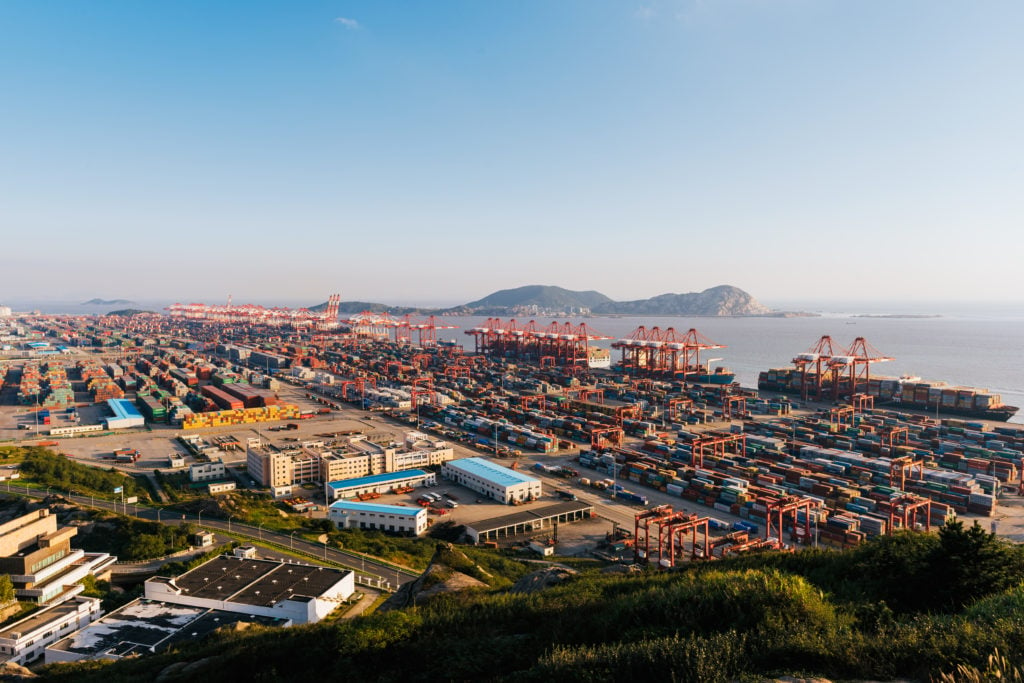
Low sulfur surcharges spark debate as container lines look to limit losses

The container shipping sector has had to cope with unprecedented challenges this year as the coronavirus disease (Covid-19) continues its deadly spread around the world.
Before the turn of the year, container lines focused on coping with additional costs as a result of the International Maritime Organization (IMO) 2020 low sulfur fuel regulation that kicked in on January 1. With the onset of the pandemic, however, other problems have emerged.
The pandemic has emphasized just how vital container shipping services are to modern economies as they deliver the products and equipment on which societies depend. Yet, it has also undermined and disrupted demand for those services, which could translate into record losses for the sector this year.
The 2020 box shipping roller coaster first saw the shutdown of large parts of the Asian economy starting in China. Then, just as exporters reopened for business, shipping demand received a second blow as lockdown and social distancing policies were rolled out in most parts of the world, including key European and North American markets.
Demand indicators painted a grim picture of the chaos. For example, the China Ports & Harbors Association reported that China’s eight leading ports handled 37.63 million twenty-foot equivalent units (TEU) in Q1 — a decline of 8.9 percent year-on-year. At the same time, the International Monetary Fund now forecasts that world trade will decline 11 percent in 2020.
Spot freight rates remain buoyant
Container lines have managed to keep spot freight rates relatively stable so far.
China-U.S. West Coast and China-U.S. East Coast prices increased just 1 percent per forty-foot equivalent unit (FEU) in the week ending 28 April. On the Asia-Europe trade, spot freight rates from Shanghai to Genoa and Shanghai to Rotterdam were up 26 percent and 13 percent year-on-year at US$1,871 (€1,720) per FEU and US$1,490 per FEU respectively in the week ending 23 April, according to the World Container Index by shipping consultancy Drewry.
Long-term rates look equally buoyant. Moreover, early evidence from liner-shipper negotiations on the trans-Pacific trade, which take place from April to May and generally cover the following 12 months, suggests no huge year-on-year changes in pricing.
Many shippers are thought to be anxious to confirm capacity ahead of an expected surge in demand once lockdowns are lifted.
Blanked sailings the way forward
In the face of a precipitous decline in demand, carriers have withdrawn capacity at record rates rather than taking the more traditional path of engaging in a price war in search of market share.
“More than 250 scheduled sailings will be withdrawn in the second quarter 2020, as carriers react to rapidly fading demand,” said Dominique von Orelli, Global Head of Ocean Freight at DHL Global Forwarding, in the company’s latest Ocean Freight Market Update. “No market segment will be spared, with capacity cuts announced across almost all key routes.”
In late April, shipping analyst firm Sea-Intelligence recorded 456 blanked sailings, of which 342 were on the main deep sea trade lanes, as a result of the Covid-19 pandemic.
While the voiding of sailings has often been at short notice and has caused unnecessary disruption such as equipment shortages and port congestion, it is a strategy that has worked for carriers.
Oil price crash prompts debate about pricing transparency
Adding to the unique nature of the trading environment over the last three months has been the crash in crude oil prices which has prompted debate about how savings are passed on to customers.
Understanding shipping surcharges
Understanding shipping surcharges
Container lines use a complex assortment of fees and surcharges which hugely vary by carrier and trade and often cause shipper confusion and consternation.
Since January this year, most lines have included an array of Low Sulfur Surcharges (LSS) for bunkers following the introduction of IMO 2020 rules, which makes it mandatory for ships to use low sulfur fuels unless fitted with emission abatement technology such as scrubbers.
Each line uses its own methodology to calculate Low Sulfur Surcharges (LSS) levied on customers. A similar methodology is used to cover fuel costs more generally via Bunker Adjustment Factor (BAF) fees. Both are calculated, for the most part, by taking a spread of fuel prices over a set period to decide future charges.
Shippers had long raised fears that lines would use LSS to bolster profits. The recent collapse of oil and bunker prices has further fueled the debate over the fairness and transparency of the resulting charges.
The operating costs for carriers have reduced as bunker prices have tumbled, and there have been calls from shippers for BAFs to be cut more quickly to take account of the remarkable movement of crude markets.
There is also mounting dismay that LSS are being charged at all now, given that the price of Very Low Sulfur Fuel Oil (VLSFO) has fallen near to, or even below, the cost of low sulfur fuel oil (LSFO) in some markets.
Shippers have also noted that carriers are still charging LSS to keep rates at a certain level, even as they take advantage of low bunker prices to steam vessels from Asia to Europe via the Cape of Good Hope to avoid paying Suez Canal fees.
With the pandemic expected to last through the second quarter, carriers face substantial losses for the year which could yet worsen if a price war breaks out. Whether the surcharges continue then will determine the outcome of this lengthy debate.







 English
English